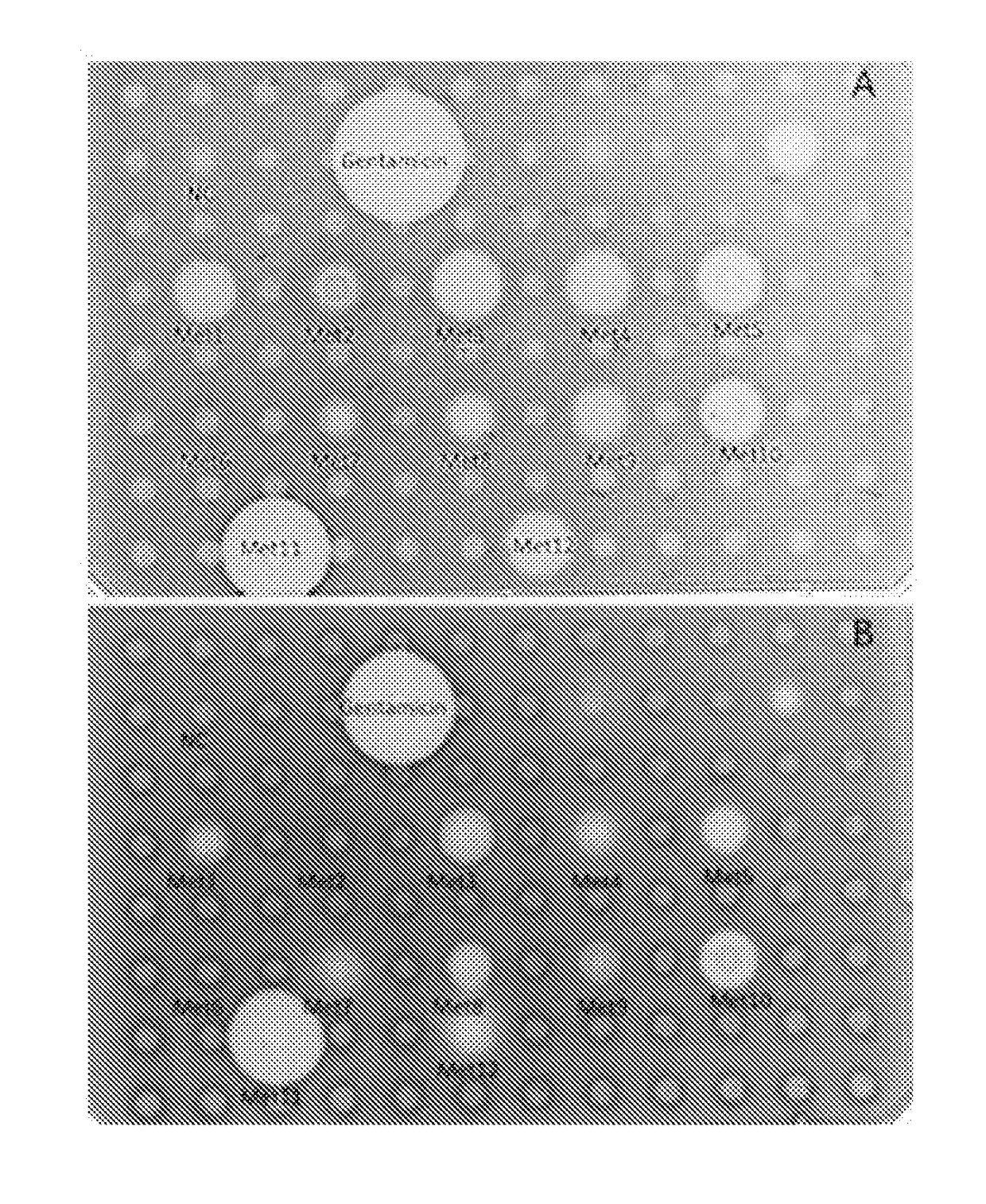New antimicrobial peptides, their variants and uses
a technology of antimicrobial peptides and peptides, which is applied in the field of new antimicrobial peptides, can solve the problems of loss of viability or ability to produce bioactive secondary metabolites, inability to meet the requirements of functional studies, and inability of microorganisms to develop resistance, etc., and achieve the effect of improving activity
- Summary
- Abstract
- Description
- Claims
- Application Information
AI Technical Summary
Benefits of technology
Problems solved by technology
Method used
Image
Examples
example 1
nt DNA Isolation
[0134]Fresh and young leaves of Empetrum nigrum L. were surface sterilized with 70% ethanol (v / v) for 1 min and in sodium hypochlorite (3.5% v / v) for 5 min and used for the isolation of genomic DNA (Pirttilä et al. 2001).
example 2
ic Library Construction and Screening for Antibacterial Activity
[0135]Plant DNA isolated from E. nigrum was dissolved in sterile water to a concentration of 0.1 μg μl−1. The DNA was then subjected to preparative pulsed-field gel electrophoresis in a CHEF-DRII (Bio-Rad) system. The electrophoresis conditions (pulse intervals and durations) were: N / S—60 s and E / W—60 s for 6 h; N / S—90 s and E / W—90 s for 6 h; N / S—99 s and E / W—99 s for 6 h, respectively, with a voltage of 6 V / cm, a 120° fixed angle and using a 0.15× Tris-borate-EDTA (TBE) buffer. During the electrophoresis, the temperature was maintained at 10° C. After electrophoresis, a strip from each side of the gel was cut off and stained with ethidium bromide to visualize the DNA. The high-molecular-weight DNA was then excised from the remaining unstained part of the gel and electro-eluted for 1 h at 100 V in a dialysis bag containing 0.5×TBE. Amplification by primers specific for fungi and bacteria was done as previously (Koskimäk...
example 3
Plasmids and Growth Conditions
[0137]EPI-300™-T1® Phage T1-resistant E. coli cultures were grown at 37° C. on Luria-Bertani (LB) agar or in LB broth+10 mM MgSO4 supplemented with the appropriate antibiotics. The following antibiotic concentrations were used for the E. coli strain: chloramphenicol 12.5 μg ml−1 and ampicillin 100 μg ml−1. Plasmid pCC1FOS™ (Epicentre, Madison, USA) that carries two origins of replication, a single copy origin (ori2) and an inducible high copy origin (oriV) was used to construct the metagenomic library from endophytes of Empetrum nigrum and for subcloning the genes conferring such antibacterial activity. The pET11-c vector was used to express the genes responsible for the antibacterial activity in the host strain E. coli BL21 (DE3) gold.
PUM
| Property | Measurement | Unit |
|---|---|---|
| Fraction | aaaaa | aaaaa |
| Fraction | aaaaa | aaaaa |
| Volume | aaaaa | aaaaa |
Abstract
Description
Claims
Application Information
 Login to View More
Login to View More - R&D
- Intellectual Property
- Life Sciences
- Materials
- Tech Scout
- Unparalleled Data Quality
- Higher Quality Content
- 60% Fewer Hallucinations
Browse by: Latest US Patents, China's latest patents, Technical Efficacy Thesaurus, Application Domain, Technology Topic, Popular Technical Reports.
© 2025 PatSnap. All rights reserved.Legal|Privacy policy|Modern Slavery Act Transparency Statement|Sitemap|About US| Contact US: help@patsnap.com



